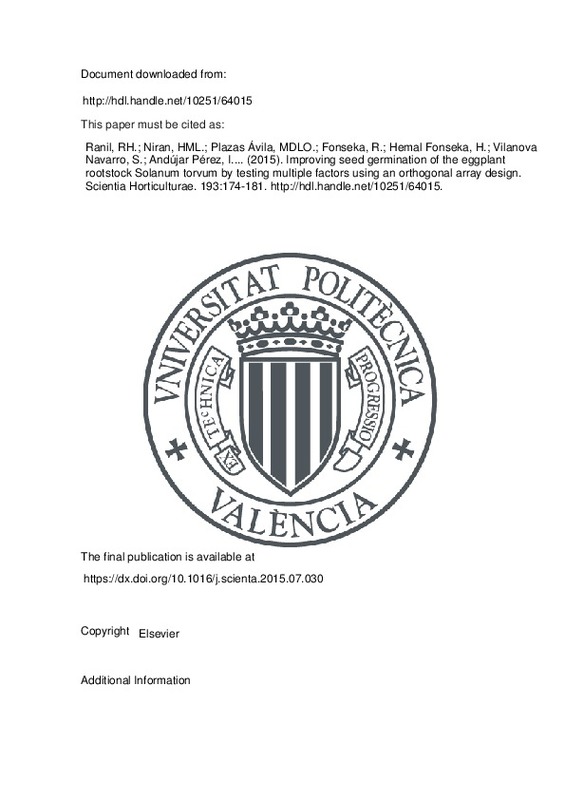JavaScript is disabled for your browser. Some features of this site may not work without it.
Buscar en RiuNet
Listar
Mi cuenta
Estadísticas
Ayuda RiuNet
Admin. UPV
Improving seed germination of the eggplant rootstock Solanum torvum by testing multiple factors using an orthogonal array design
Mostrar el registro completo del ítem
Ranil, RH.; Niran, HML.; Plazas Ávila, MDLO.; Fonseka, R.; Hemal Fonseka, H.; Vilanova Navarro, S.; Andújar Pérez, I.... (2015). Improving seed germination of the eggplant rootstock Solanum torvum by testing multiple factors using an orthogonal array design. Scientia Horticulturae. 193:174-181. https://doi.org/10.1016/j.scienta.2015.07.030
Por favor, use este identificador para citar o enlazar este ítem: http://hdl.handle.net/10251/64015
Ficheros en el ítem
Metadatos del ítem
| Título: | Improving seed germination of the eggplant rootstock Solanum torvum by testing multiple factors using an orthogonal array design | |
| Autor: | Ranil, R. H. Niran, H. M. Lahiru Fonseka, Ramya Hemal Fonseka, H. Andújar Pérez, Isabel | |
| Entidad UPV: |
|
|
| Fecha difusión: |
|
|
| Resumen: |
[EN] Solanum torvum is a highly vigorous relative of eggplant that is resistant to a number of harmful soil-borne diseases and is compatible for grafting with eggplant. Being a potential rootstock, this plant frequently ...[+]
|
|
| Palabras clave: |
|
|
| Derechos de uso: | Reserva de todos los derechos | |
| Fuente: |
|
|
| DOI: |
|
|
| Editorial: |
|
|
| Versión del editor: | https://dx.doi.org/10.1016/j.scienta.2015.07.030 | |
| Código del Proyecto: |
|
|
| Agradecimientos: |
This work was completed as part of the initiative "Adapting Agriculture to Climate Change: Collecting, Protecting and Preparing Crop Wild Relatives", which is supported by the Government of Norway. The project is managed ...[+]
|
|
| Tipo: |
|







![[Cerrado]](/themes/UPV/images/candado.png)


